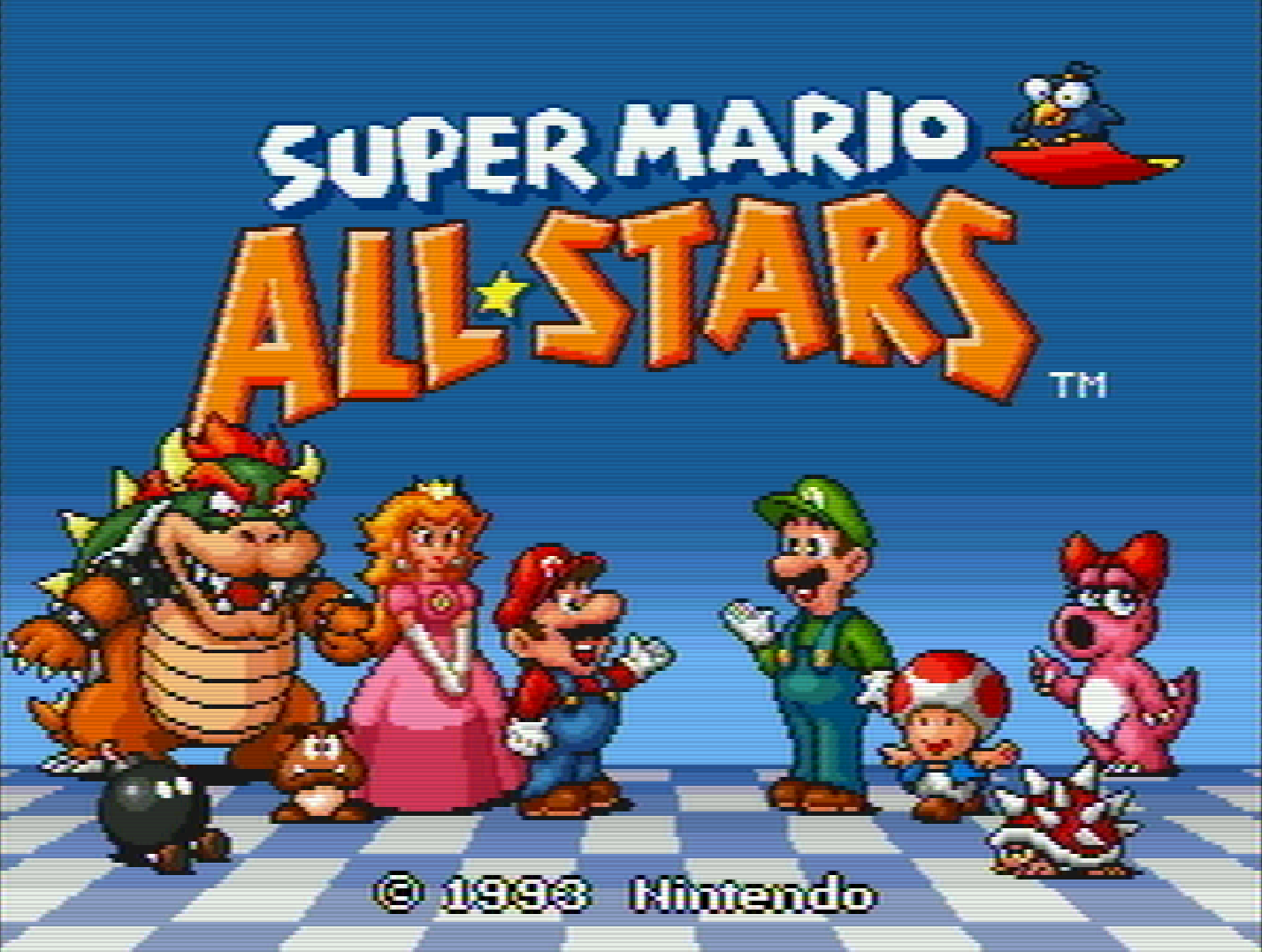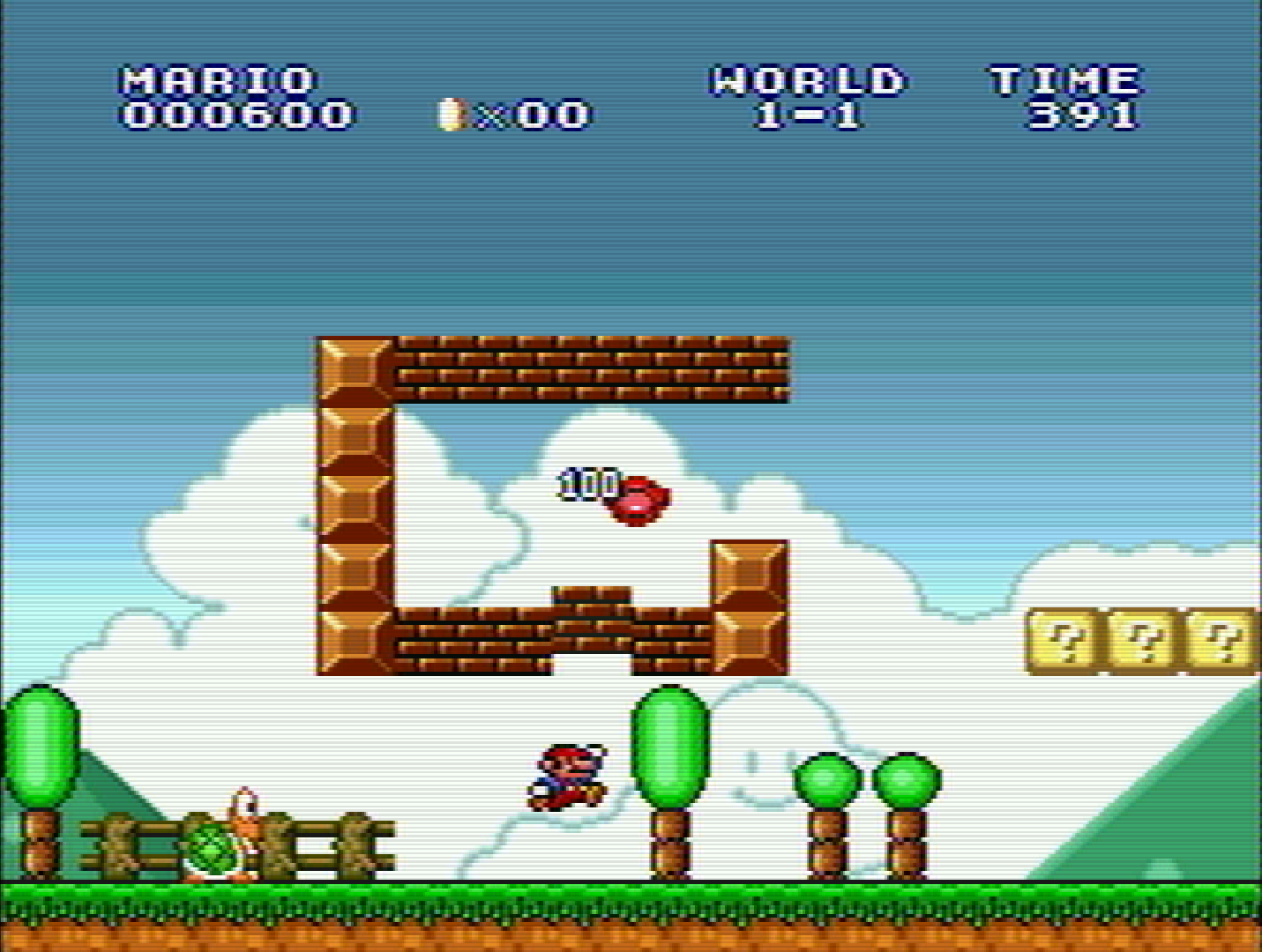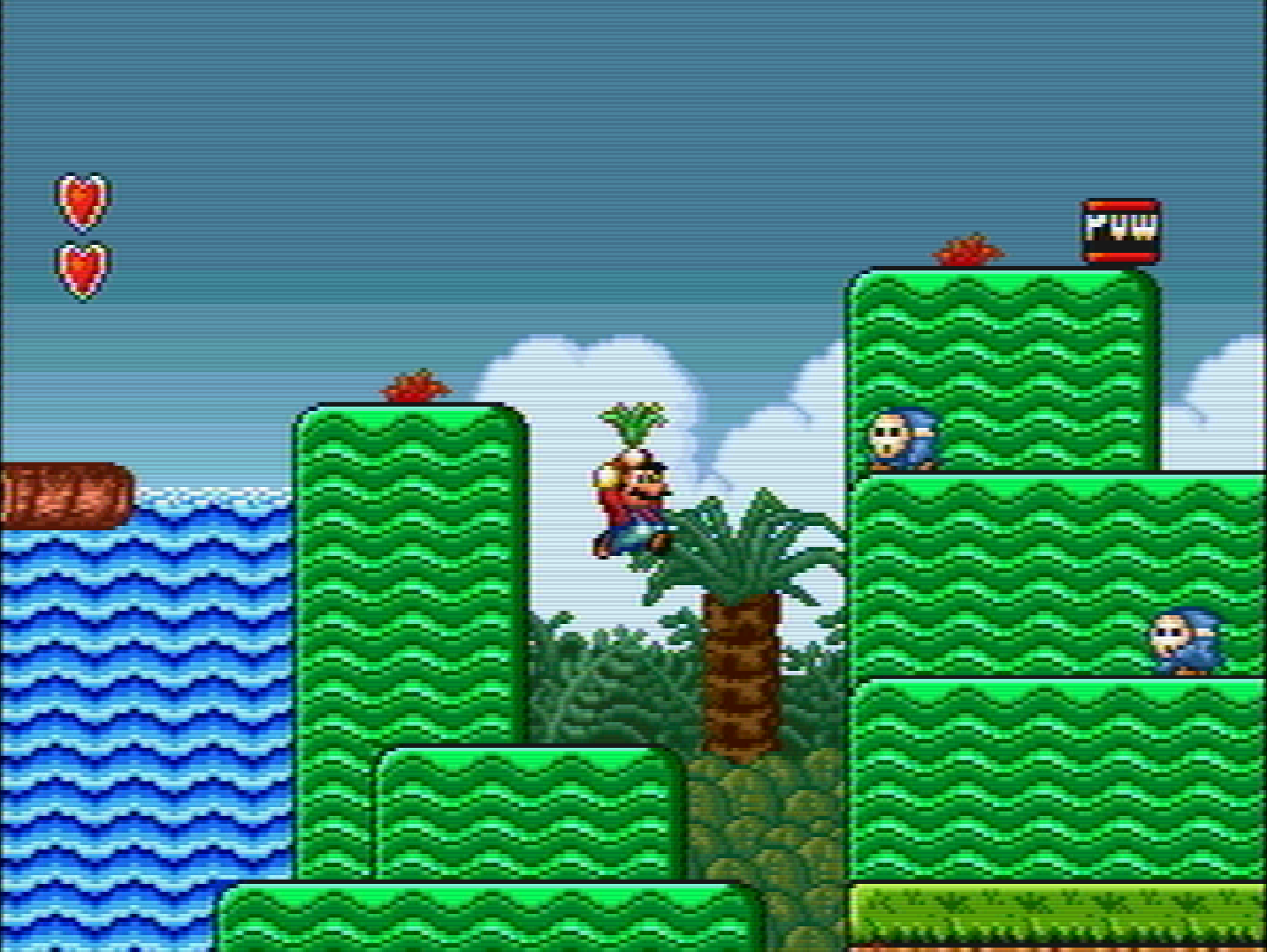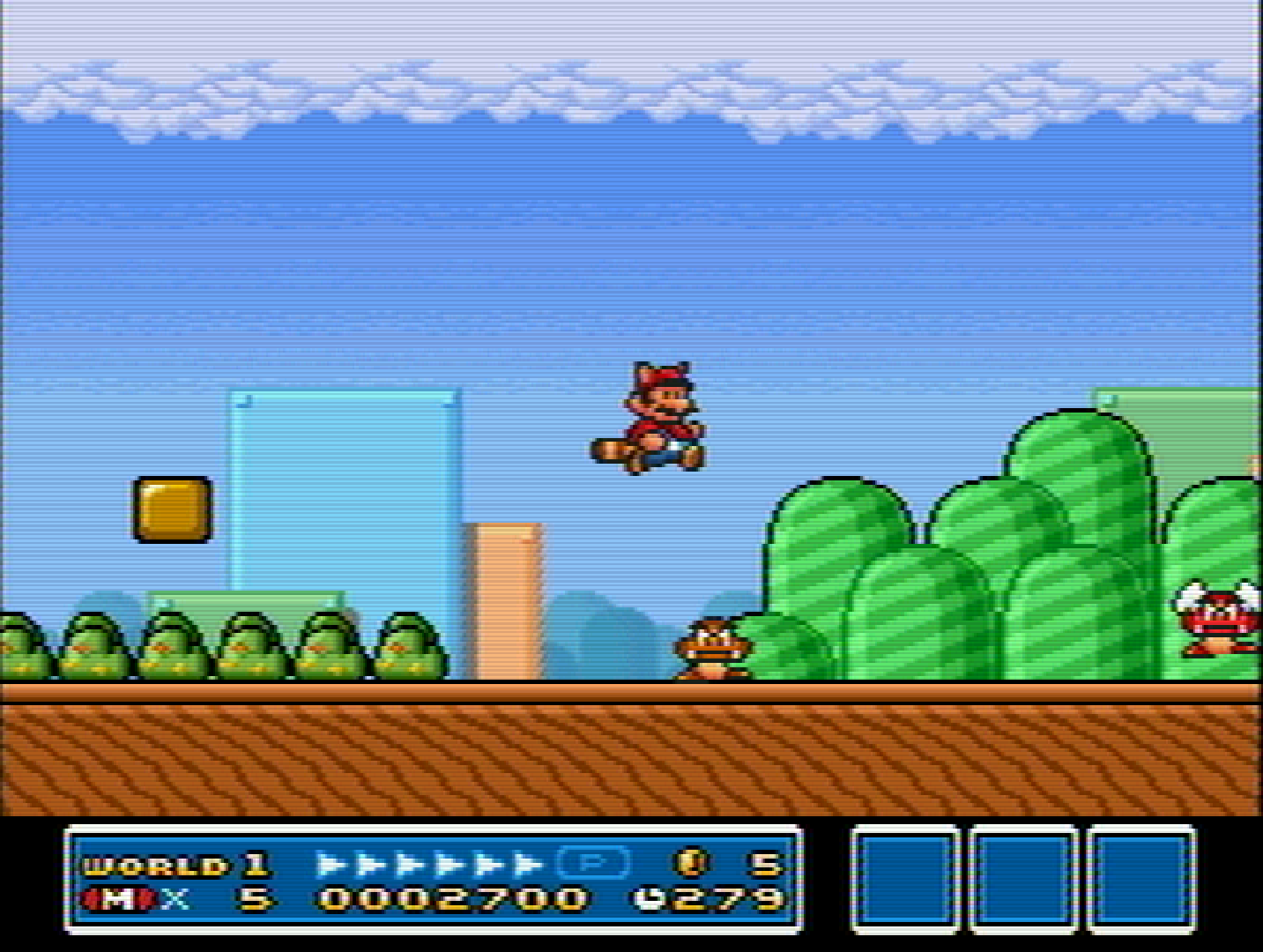
Published: 2022/05/03
Last updated: 2024/01/05
Lately, seeing some articles on games we grew up with, I got to thinking about some that influenced me. My first games, iconic games, games that shaped the way I saw the medium. It seems like it should be interesting to sit down and reminiscence about some of that.
In this case, I think I’d like to focus on a game that, to my mind, represented the joy and pride-of-craft of the 16-bit era: Super Mario All-Stars.

I grew up in the interesting situation of having a number of generations of consoles available to me essentially simultaneously. In my home alone, I was exposed to the Atari 2600, Super Nintendo, several old DOS PCs, and a Windows 98 PC a little later. A little beyond that saw the introduction of a Sega Genesis and a PlayStation.
Essentially, I saw the evolution of games from a number of angles. However, for that part of my childhood, spanning the decade of the 90s, I think that of all the ones I consider representative, Super Mario All-Stars is one I kept coming back to time and time again. Its sounds, graphics and gameplay became the very image of the 16-bit generation.
It wasn’t my first game, but I think it was perhaps the first game that I was given for my own SNES, after having played the console a few times when visiting relatives. It was special for that reason, being one of the few titles that we had at the time. It was also staggeringly economical – that one cartridge contained four separate games on it, a considerable feat considering that the originals weren’t that terribly old (only 3 years in the case of Super Mario Bros 3!) and were all improved, sporting gorgeous new graphics and music, while still leaving room for four save slots per game. Even more interesting, one of the included games, listed as Super Mario Bros.: The Lost Levels, was the first official Western release – a game that had hitherto been hidden from us. Who could resist such a draw?
For my part, I found the entire thing irresistible and a fantastic time-killer. I had previously been exposed to Super Mario World, so I was somewhat familiar with the mechanics, and knew that all of those games had preceded it, so it was also interesting from that angle, though it also wasn’t something I put too much thought into. I mean, it was all new to me, right?
I don’t think I played them in any particular order, jumping from game to game as my interest came and went, but I do know that I eventually did beat all of them except for Super Mario Bros 3, which I fully finished later on in life, though I did make it to World 8. This does mean I actually beat the much harder Lost Levels beforehand, including the extra worlds. However, for the purpose of this article, I’ll go in the chronological order of the games themselves and look at both the mechanics and my specific thoughts and reactions at the time, so far as I can remember.

Super Mario Bros., the game that indisputably changed everything, is also surprisingly bare-bones for what it is. In this game, you guide Mario on a fairly straightforward quest to defeat Bowser and rescue Princess Peach Toadstool and, apparently, her entire Cabinet in the process. If you choose 2-player mode, then Mario’s taller, less famous brother, Luigi, becomes available for play for the second player, with both alternating control every time the other completes a level or loses a life.
In terms of gameplay, the most immediately striking thing is that, unlike every other platformer on the system (except The Lost Levels), you can’t actually go left very far – once the screen scrolls, whatever was left behind is gone forever. Kinda spooky, really, but it doesn’t interfere as much as you might think. The rest of the gameplay is pretty much what you’d expect, following a comfortable pattern of eight worlds consisting of three regular levels and then a castle level where you confront Bowser. Power-ups are limited to the Mushroom (doubles your size, allows you to survive contact with one enemy, and enables you to break certain bricks), Fire Flower (allows you to shoot fireballs; getting to castles like that is a badge of honour), and the invincibility-granting Starman (dndndn dndn dndndn); there are also tons of coins, which grant a 1-up upon collecting 100 of them, and a green mushroom that also grants a 1-up. Level types are similarly a bit limited, having basically plains, underground areas, the somewhat-dreaded but really not that bad water levels, and castles. There are also various pipes that can lead to various bonus areas, as well as hidden areas called “warp zones” that let you skip to certain worlds, though both of those are optional and there for you to find. It’s also possible to find airborne treasure rooms known as “coin heaven” by climbing vines that sprout from certain blocks.
Each type of level had its own theme, lovingly spruced up and giving each level its own kind of feeling. The plains carried the iconic theme song, bright and boisterous, lead by strong, warm trumpet sounds and exotic-sounding steel drums. The sound of that trumpet is perhaps the single most iconic SNES MIDI instrument in my mind because of it. The bonus areas that can be found here and underground had a similarly lively, congratulatory-sounding song.
In contrast, the underground levels had a cool, drum-lined, sneaky-sounding song that reminds one of rats and bats and slow but steady progress. It was always kind of a relief at the end when you came up and were greeted by the bright theme song.
The water levels were interesting in that they were punctuated by a swaying waltz combining what seems like bells and violins, creating a very elegant feeling that mimics the feel of swaying ocean currents. No one understands why there’s water in the fire there, but having a fire flower is definitely a welcome defence. Water levels used to get a lot of flak, but these ones are generally pretty fair and relaxing, especially once you realise that the jellyfish can’t reach a crouching or small Mario.
Lastly, the castle levels. Big, imposing, fireball-filled death-traps that they are, the soundtrack fits perfectly, with deep-voiced instruments calling up images of dread and quietly urging you to make your way through quickly, until suddenly, Bowser appears in front of you with a sudden burst of energy and his own theme song, urging you forward to a…generally comically short-lived fight, actually. This gives way to a triumphant fanfare, and you’re then treated to either the royal Toads goofing off and informing you that the Princess is still further afield, or finally, the actual Princess herself, which is all the reward you need as your hands and heart steady themselves from the rush of finally Making It.
Surprisingly enough, this game actually has a hard mode, enabled upon saving the Princess. It doesn’t do a whole lot though, merely replacing Goombas with Buzzy Beetles, a formerly uncommon enemy type usually found underground, and replacing certain early levels, like 1-3, with their harder variants found later in the game. Still, it does add a little replayability, and more importantly, bragging rights.

Did I say bragging rights? Because you’ve just lost them. The sequel to the first game is mostly more of the same in terms of most mechanics and structure, but with several key differences. Not only does it have the series’ first power-down in the form of a poisonous mushroom, which is identical in effect to touching an enemy, it also introduces levels with wind that affects your jumps, squid that refuse to stay underwater, and pipes that lead you to potential traps or reverse warp zones that cause you to lose progress. That’s right, it’s quite possibly the first commercial troll game.
On the more positive side, while it lacks a two-player mode, it does allow for one to play either a “Mario Game” or “Luigi Game”, with each player controlling differently. Mario acts almost exactly as he does in the first game, save for a much higher bounce after stomping on enemies, while Luigi is able to jump noticeably higher and farther, but has traction akin to skidding on ice. It’s hard to say which character has it harder, as it can be a bit situational. It’s also worth noting that unlike every other game in this collection, you can save and resume your progress at the current level instead of starting the world over again.
Interestingly enough, this game really goes out of its way to hate on warp zones. While normal ones can be found too, entering any warp zone causes you to miss out on accessing World 9. You are, however, still able to play the bonus worlds, A-D, which are often quite surreal and function with their own logic, like a twisted fan game. Overall, it definitely earns its Japanese moniker of “Super Mario Bros. For Super Players”, and for that reason it was skipped over in the West in favour of what we call “Super Mario Bros. 2”.

Of all the games in this collection, Super Mario Bros 2 undeniably got the biggest sprucing up, with flush, lively backgrounds everywhere you go and a sprightly soundtrack; in fact, its main overworld theme has, in some circles, now become synonymous with wild shenanigans and I wouldn’t have it any other way.
It’s immediately obvious that this title is wildly different from any Mario game before or since, and for good reason – it wasn’t originally a Mario game. Given the difficulty of the original Super Mario Bros. 2,, as noted above, a different game, Doki-Doki Panic, was hacked up and localised; this version was eventually released in Japan as Super Mario USA. Despite its unusual origins, a number of things in this game became series staples, including the introduction of Shy Guys, Ninji, Pokey, and Birdo. Interestingly enough, those particular things all eventually were given a strong association with Yoshi.
This strange new world, known as Subcon, is linked to Mario’s own via a magic door that he saw in a dream. The native citizens had begged him for liberation from an evil king known as Wart, who, they hastened to add, had a noted distaste for vegetables. Upon waking up, Mario joined Luigi, Toad, and the Princess on a picnic, where they found a cave containing the very same door Mario had seen.
This time around, the game is again for one player only, and control may be switched between the four available characters after each death or after completing each level. Basically, the difference between them comes down to jump height, how quickly they pick things up, and how quickly they move when holding something. In terms of general swiftness, from slowest to fastest is the Princess, Luigi, Mario, and Toad. In terms of jump height, it goes Toad, the Princess, Mario, Luigi (interestingly enough, very much like the original Super Mario Bros. 2), though there is one slight exception: Peach has by far the longest jump owing to her ability to float in the air for several seconds. It should also be noted that anyone’s jump height can be doubled by crouching for a moment first. Used judiciously, this allows for several potential skips. The world layout is a little different, consisting of 7 worlds with 3 levels each, the third being a boss level.
The most obvious difference is undoubtedly your method of attack – jumping on enemies doesn’t hurt anyone. Instead, you have to HURL them at each other, or else force-feed them vegetables; totally hardcore. It’s also notable in having the first jump-scare monster in the series in the form of Phanto, the masked monster who chases you unrelentingly and forever any time you find yourself holding a key. It’s also the Mario game with the fewest power-ups, having only 1-up mushrooms, starmen, and a mushroom that increases your HP by 1 for the rest of the level. The mushrooms in particular are only found via the use of a magic potion, which reveals a door that links to a shadowy version of the current screen; this is also the only location to harvest coins, which can be used at the end of the level in a slot-machine mini-game for extra lives. This is also probably the only Mario game where quite nearly every single level ends in a boss fight of some sort, usually against Birdo.
While there’s a lot to take in relative to the more familiar mechanics of the other three titles, at the same time you almost don’t notice that much because you’re so busy just admiring the overall ambiance, formulating strategies for which character to use where, and hunting for just the right place to put those potions, all while being kept optimistic and excited by the energetic soundtrack. I remember being mesmerised at just how (relatively) weird everything was, and wanting to continue on just to see what else it could throw at me. I was seldom disappointed. This game had a bit of everything; pyramids, whales wearing eye-liner, physics puzzles, magic carpets, legos. Small wonder this was chosen to be the first Super Mario Advance port.

The final game in the collection, Super Mario Bros. 3, consistently has the honour of being called one of the very best games on the NES, and this spruced-up version is no different. In overall feel, it’s like everything you love about the other games dialled up and expanded upon, throwing ideas at you left and right in short, sweet set pieces, all separated by charming and often non-linear maps.
You want power-ups? This game has everything you already know plus the Super Leaf (turns you into a raccoon with the power to fly and slowly fall), P-Wing (like the leaf, but infinite flight for a whole level), Frog Suit (awkward hops on land, but buttery-smooth swimming), Tanooki Suit (like the raccoon, but can also become a statue capable of killing just about anything), and the glorious Hammer Suit (immune to small fireballs when ducking and can throw hammers that ravage everything). That’s just for use in the levels – in the map screens there are also hammers (for finding shortcuts), music boxes (temporarily nullifies Hammer Bro special encounters), anchors (keeps the boss ship from moving around), Jugem’s Cloud (lets you skip a level), and even a Warp Whistle (allowing you to skip whole worlds). There’s even a level with a big ol’ shoe you can ride around for no reason other than that they could. The best part is, everything but the shoe can be given to you as inventory items from certain locations and encounters, allowing you to power-up at will.
You want scenarios? This game covers plains, pyramids, a whole world of water levels, giants, icy plains, heavenly realms, pipework labyrinths, the depths of hell, and a whole lot more in between. There’s even a boat! It makes little “doot” sounds as you row it around. It’s great.
Even the map screens are packed with features. Not only does it (obviously) hold your main levels, but also special encounters with various permutations of Hammer Brothers (who reward you for beating them), Toad Houses (a free item), a picture-alignment mini-game (free lives), fortress checkpoints (open up shortcuts or new areas on the map), and castles that give way to dangerous airship battles (and the airship flies around randomly if you fail, unless anchored). Those are just by default. Under certain esoteric conditions, it’s also possible to spawn a card-matching games (free items/coins/lives), a magical treasure ship (tons of coins and lives), and even a white Toad House (with two potential prizes that alternate by world). Unlike the other games, the number of levels in each of the 8 worlds actually varies, and not all of them are mandatory, adding a new degree of player agency. To further encourage players to explore, there’s also a new end-of-level mechanic that assists in gaining extra lives: each numbered level ends with collecting a card from a roulette box; the card is marked with either a mushroom, fire flower, or star. Collecting any three cards grants an extra life, but collecting three of the same kind grants two, three, or five extra lives, respectively.
So far as players go, this title also features the triumphant return of two-player mode, with play alternating like in the original game, and with a new twist – the players’ progress impacts each other, as players clearing one level render it inaccessible to the other. While this obviously encourages cooperation, there’s also a new competitive element in the form of a Battle Mode, resembling the original arcade game, Mario Bros, where players can battle for both each others’ cards and the right to play the next level out-of-turn.
In terms of graphics and music, it’s definitely one of the more distinctive-looking ones so far as Mario’s overall look goes, and every world and level type has its own distinctive theme as one might expect. The airships and hell world both especially stand out for how ominous and menacing they are, which is only enhanced by the darkness and lightning strikes going on all around.
That’s probably one of the most distinctive memories of it for me: fighting my way through those auto-scrolling, ominous airships, hoping desperately for the end, only to be confronted with a tense boss fight in cramped quarters that managed to get just a bit harder every single time.
My other fondest memory, of course, is that hammer suit. Nothing was better than stocking up on hammer suits, saving and quitting, and then going back to earlier worlds and raining unholy hell on all those who had wronged me – especially that stupid, spiteful sun in the desert world. Nothing hits quite like revenge.
Despite all the time I put into it, I never did quite beat it as a kid, as I said – World 8 is pure hell and a challenging test. It felt pretty good to be able to come back later and finally clear those last couple of challenges. It was really daunting in that there was almost no way to cheese most of it. Jugem’s clouds don’t work on special encounters, most of them auto-scroll so you can’t just blast past challenges, and there’s almost no way you have enough P-wings to avoid everything. Adding to the tension is the fact that there’s also a segment where the levels you’re assigned are random, and change every time you move across that particular area. It’s enough to give one a touch of PTSD. It’s fantastic.
Super Mario All-Stars might not have been the most exciting pick on a system that had so many excellent games, but to me, it became a cultural icon, full of soul, beauty, and challenge. It may not have dramatically altered the way I think of video games, but it showed me some of the height of their glory, and the potential for beauty and awe that the new system was capable of delivering. I think that’s more than enough to justify its place in my heart.